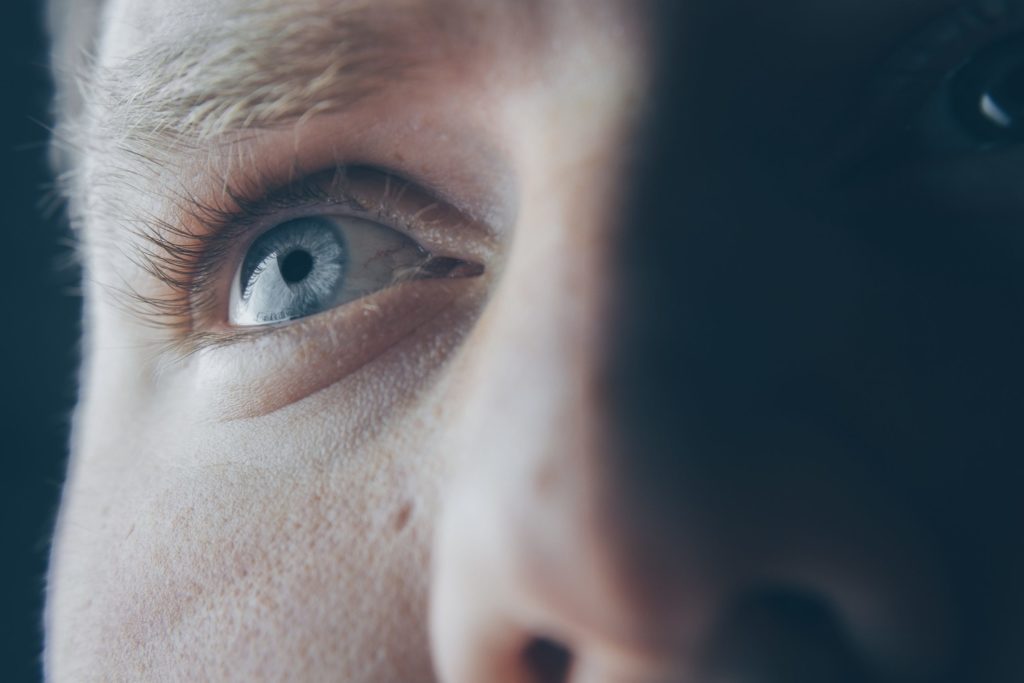“Eye technology is rapidly evolving,” says Edward Manche, M.D., director of cornea and refractive surgery at Stanford University. Here’s a glance at some of the new tests and remedies now available for your eyes.
- A more revealing eye test: A dilated-eye exam allows a doctor to literally see inside your body, checking on the health of your blood vessels, among other things. “There are around 300 systemic diseases that can show up in the eye,” says optometrist Kerry Gelb, who stars in Open Your Eyes, a documentary film that explores this concept.
- A more intimate look at your blood vessels: Optical coherence tomography (OCT), a high-definition technology that uses light waves to take cross-sectional images of the eye, has been around for decades. OCT angiography (OCTA) is a newer variation that allows doctors to see blood flowing through the vessels in the retina — even tiny capillaries.
- New drops for dry eye: Traditional antihistamine-containing eye drops can make redness and burning worse by exacerbating dryness, says Alisha Fleming, an optometrist based in Philadelphia. Last October, Refresh launched a new drop for dry eye, Refresh Relieva, which boosts hydration with glycerin and hyaluronic acid. Soothe XP and Systane are other brands that may offer relief.
- Fresh approaches for glaucoma: This condition, in which pressure builds up in the eye and damages the optic nerve, is a leading cause of blindness and particularly affects African Americans and Hispanics. Stents, some as small as an eyelash, are newer, minimally invasive options for open-angle glaucoma. The stent (Hydrus Microstent and Glaukos iStent are two examples) is implanted in the eye during cataract surgery to relieve eye pressure.
- DIY vision monitoring: EyeQue’s VisionCheck ($69) is an automated miniscope that attaches to your smartphone. It performs an app-based refraction test, allowing you to track vision changes between doctor visits, and gives you your unique “eyeglass numbers” needed to order specs online.
- Age-related macular degeneration vitamins: Age-related macular degeneration (AMD) is a leading cause of vision loss after age 50. For certain patients with the dry form of AMD (which accounts for up to 90 percent of all cases), taking AREDS 2 — a supplement containing antioxidants lutein, zeaxanthin, copper, zinc, and vitamins C and E — can decrease the risk of progression of the dry form of the disease into the more destructive wet form, says J. Martin Heur, M.D., medical director of the USC Roski Eye Institute in Los Angeles.
- Glasses that give you “natural” vision: Progressive lenses seamlessly adjust to correct vision at multiple distances; trifocal lenses have visible lines but work similarly to improve vision necessary for tasks like computer work or shaving. “As a kid, you could see what you needed to see at all ranges.
- A new cataract solution: Cataracts — the clouding of the eye’s lens — can blur and double vision, intensify light sensitivity and decrease night vision. If you’re considering cataract surgery, ask your doctor if you’re a candidate for PanOptix, a trifocal-lens implant approved by the Food and Drug Administration in 2019. Other cataract lenses, such as monofocal, can correct distance vision but leave much to be desired when it comes to near and intermediate distances.
- Blue-light blockers to reduce strain: Staring at a screen may cut your blinking rate, drying out your eye. There’s also evidence that blue light late at night skews your circadian rhythm, making it harder to fall asleep. One solution, from Eyesafe, filters blue light from digital devices. Certain models of Dell computers are now equipped with the filter, but the technology is also available through Zagg VisionGuard, a line of screen protectors that adhere to your smartphone or tablet.
- Virtual reality to find the perfect fit: Ill-fitting frames can affect your vision. If you have an iPhone, there are a number of apps that allow you to virtually try on glasses to get the right fit before placing an order online.
SOURCE: AARP


